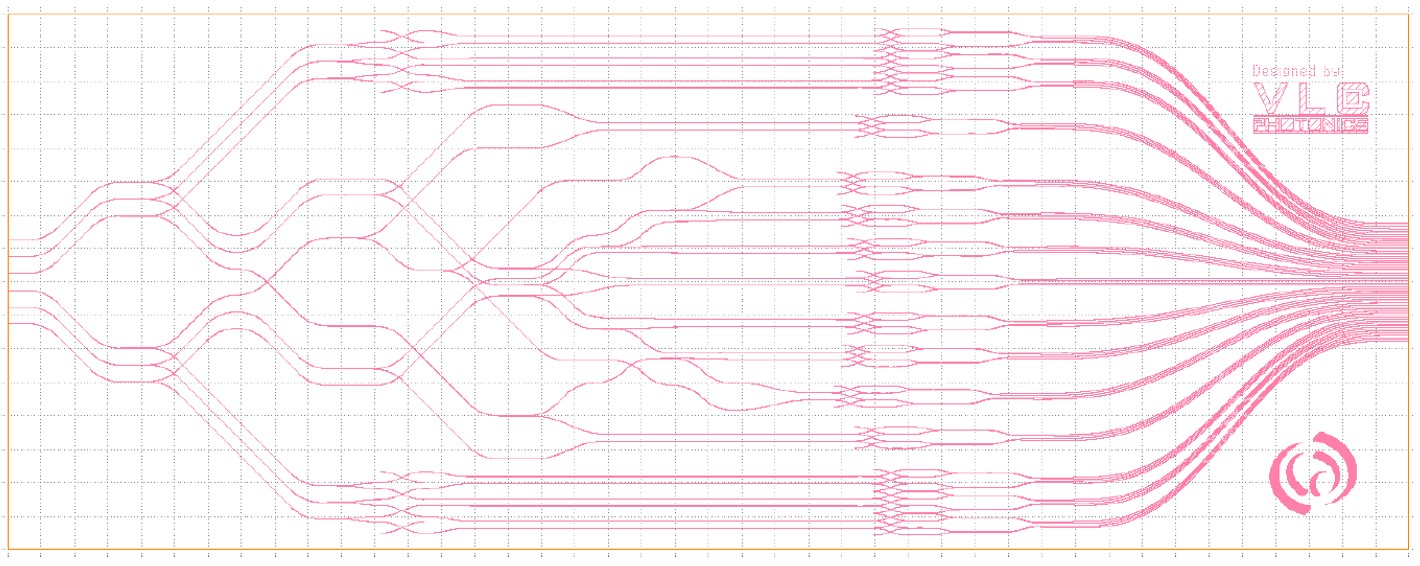After two years (2016-2017) of preliminary studies and design, the baseline solution for the SPICA Fringe Tracker (SPICA-FT) is to add a fibered 6T integrated optic chip, encoding the 15 baselines with the ABCD method and to use the low-resolution H-band spectrograph of MIRCx and the CRedOne detector. This part of the project is decomposed into four main activities:
- Design and fabrication of the IO chip. Assembly and photometric characterization
- Design and realization of the interferometric testbed in Nice
- Design and realization of the opto-mechanical interface with MIRCx
- Study and realization of the fringe sensor loop, the state machine and the OPD controller.
The figure below presents the layout of the 6T-ABCD fringe sensor designed and fabricated by the VLC Photonics company. Each of the 6 entrance beam (on the left) is divided in 5 equalized beam by a series of splitters functions (60/40, 66/33, 50/50). 15 pairs are then formed and are entering into the dephasing cell encoding the ABCD signals. The 60 outputs match the pixels of the C-Red One detector.

The control software is divided into two main parts:1) the phase sensor computing the coherent fluxes, the photometries, and their uncertainties; and 2) the OPD controller computing the group delay and phase delay signals and managing the state machine (tracking/searching) and the control loops on the CHARA delay lines. This development is strongly inspired from the one done for VLTI/Gravity (Lacour+2019)




